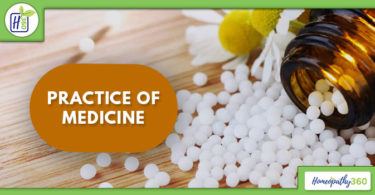ABSTRACT
Diseases affecting skin are very common in whole world. Manifestations of every skin disorder varies from person to person. Common skin disorders like eczema, psoriasis,fungal infection etc, among these eczema is the commonest skin affection.
Eczema is also called ‘dermatitis’.There are few types of eczema also which are characterised by their certain clinical features and appearances.
KEYWORDS
Eczematous dermatitis, oedema, erythema, lichenification.
INTRODUCTION
Term eczema means ‘toboil’ because it seems that skin is ”boilingout”. Dermatitis is the synonym of eczema describes a clinical and histological pattern. Eczema clinically manifest by erythema, oedema (spongiosis), vesicles, scaling and lichenification(thickening and hyperpigmentation of skin after scratching with in creased skin markings).
Histologically, eczematous appearance depends on the stage of disease.There is
more epidermal thickening(acanthosis), Vasodilatation and T-cell lymphocyte Infiltration also occur.
CLASSIFICATION OF ECZEMA
Based on etiology eczema classified into three categories
Endogenous eczema
Exogenous eczema
Combined eczema
-Endogenous eczema
In endogenous eczema, constitutional factor is the predisposing factor.
Types of endogenous eczema
1.Atopic dermatitis
2.Seborrheic dermatitis
3.Discoid dermatitis
4.Lichen simplex chronicus
5.Gravitational dermatitis
ATOPIC DERMATITIS
It is most common sub type of eczema.
It is seen in 3% of all infants, begins between 3&6 month of age. In atopic dermatitis there is generalised prolonged predisposition to common environmental antigens for e.g pollen, house dust mite, in which there is strong genetic predisposition to produce excess IgE.
Clinical picture of atopic dermatitis varies with age of the patient. In babies and infants often acute and facial involvement is prominent, Trunk involved but nappy area usually spared.
In children flexures like behind knees, antecubital fossae, wrists, and ankles.
In adults face and trunk usually involved, limb involvement not restricted to flexures.
Lichenification is common in adults.
SEBORRHOEIC DERMATITIS
Seborrhoiec dermatitis is an erythematous scaly rash affecting the scalp (dandruff), nasolabial folds, eyebrows, central chest and upper back.
It may be due to over growth of yeast “Malassezia furfur”resemble psoriasis.
It is seen in adults.
Incidence of seborrhoiec dermatitis in HIV positive patients is much higher and more common in males.
DISCOID DERMATITIS
It is also known as nummular eczema. It is a discrete, coin shaped eczematous lesion.
Limbs are the commonest site where discoid eczema appears.
It can be due to any chronic itchy condition whether primarily of the skin or secondary to an underlying diseases
LICHEN SIMPLEX CHRONICUS
It is a localised form of lichenification. Lichenification of eczema occurs secondary to chronic rubbing and scratching.
Common sites include neck, lower legs, anogenital region. It is characterised by extreme itching.
GRAVITATIONAL DERMATITIS
It is also called stasis eczema. Mostly occur on lower legs and associated with oedema, loss of hair, induration, lipodermato sclerosis and ulceration.
-Exogenous dermatitis
IRRITANT DERMATITIS
Irritant dermatitis is most frequently caused by irritant like detergent, alkalis, acids, solvents and abrasives.
Persons having dry skin is more susceptible to irritant dermatitis. Common affected sites are face, scrotum, back of hands. Clinical features include dryness, redness.
ALLERGIC CONTACT DERMATITIS
Allergic contact dermatit is occurs due to delayed hypersensitivity reaction following contact with antigens. Previous allergen exposure is required for sensitisation and the reaction is specific to the allergen or closely related chemicals.
Common sites are earlobes, wrists, umbilicus, characterised by erythema, oedema, to papulo vesiculation, may be manifest as itchy lichenified plaques.
-Combined dermatitis
POMPHOLYX
Pompholyx may have several causes, which include atopic eczema, irritant and contact allergic dermatitis and fungal infection. It is characterised by intensely itchy vesicles and bullae on palms, Palmer surface and sides of the fingers and soles.
COMPLICATIONS OF ECZEMA
Bacterial infection
Eczema herpeticum(herpes simplex virus can cause a wide spread severe eruption)
Papilloma virus and molluscum contagiosum are more common in atopic eczema.
Increased susceptibility to allergy
Impact on life and health(poor sleep, behavioural difficulties, impact on psychology and quality
of life in adults).
HOMOEOPATHIC MANAGEMENT
Mezereum
The principal use of this remedy is in Eruption and ulceration. Eczema and itching eruptions appear
after vaccination. There is intolerable itching which get worse from touch and warmth of bed. Itching associated with copious serous exudation. Vesicular eruptions upon the skin, running a certain course, itching, burning like fire ;dries in to a crusts and disappear;a new crop appears near or in the same place vesicles from crusts beneath which is ulceration, these crusts turn
white, chalk like, are thick, tough and leathery.
Staphysagria
Eczema of head, ears, face, and body There are thick scabs are formed which are dry and itch violently. Yellow , acrid moisture oozes from under crusts, new vesicles form from contact of exudation. Scalp commonly affected with crusty, squamous eruptions. Painful sensitisation of the scalp, skin peels off, with itching and smarting, Worse in the evening and from getting warm.
Sulphur
Sulphur is effected in skin affections that have been treated by medicated soap sand washes (irritant dermatitis). Itching and burning is present which get worse on scratching and washing.
Graphitis
Eruptions upon ear, between fingers and toes and on various parts of body with oozing of watery transparent sticky fluid.
Reference
transmitted diseases, Neena Khanna, 23rd edition
Davidson’s Principles and Practice of medicine
Allen’skeynotes rearranged and classified with leading remedies of the materia Medica and Bowel nosode including Repertorial index.
Boericke’s New manual of homoeopathic materia Medica with Repertory.
Author:
Shivani
Final year student
NHMC &hospital
New Delhi.





